Abstract
Current theory indicates that the structure of the cell wall is integral to the ability of a tissue to exhibit deep supercooling. Our previous work has indicated that the structure of the pit membrane and/or amorphous layer (protective layer), rather than the entire cell wall, may play a major role in deep supercooling (21, 22). The present study indicates a shift in the low-temperature-exotherm of current year shoots of peach can be induced by soaking twigs in water over 3 to 10 days. Alternatively, these shifts can be inhibited by exposing tissues to 10−4 molar cycloheximide. Ultrastructural observations indicated a marked alteration of the amorphous layer in xylem parenchyma of water-soaked tissue. Alterations consisted of an apparent loosening or partial dissolution of portions of the amorphous layer. Changes in the density or uniformity of the amorphous layer in cycloheximide-treated tissues were not as readily apparent. The appearance of the protoplast in tissue soaked in water for up to 10 days was characteristic of deacclimated cells. However, in tissue soaked in cycloheximide for the same period these changes were not evident. These observations further support our contention that the structure of the amorphous layer may play a key role in establishing and regulating the ability of a cell to exhibit deep supercooling.
Full text
PDF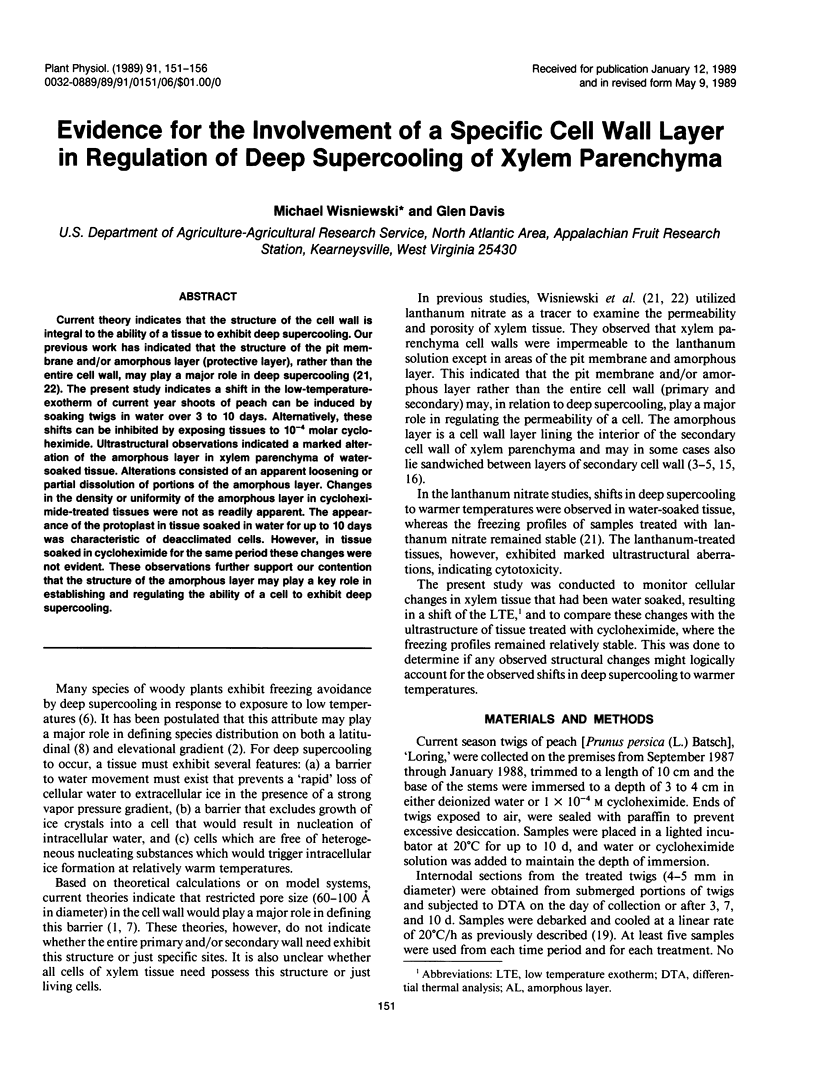
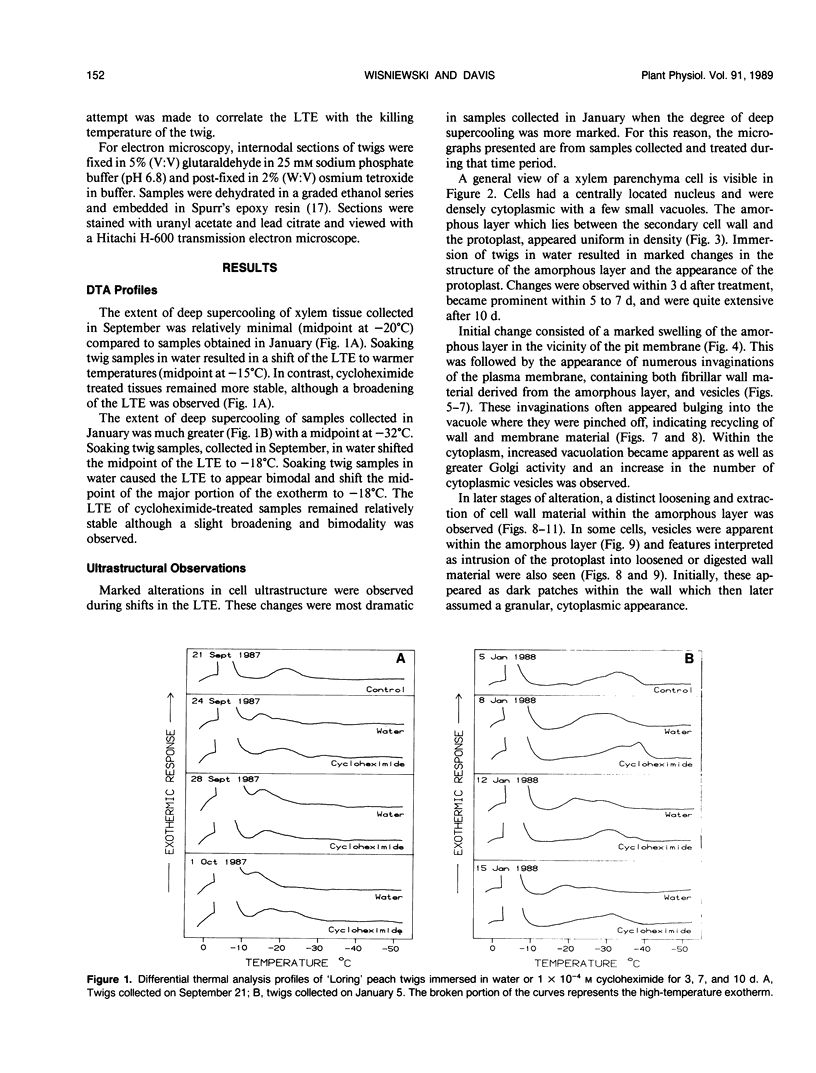
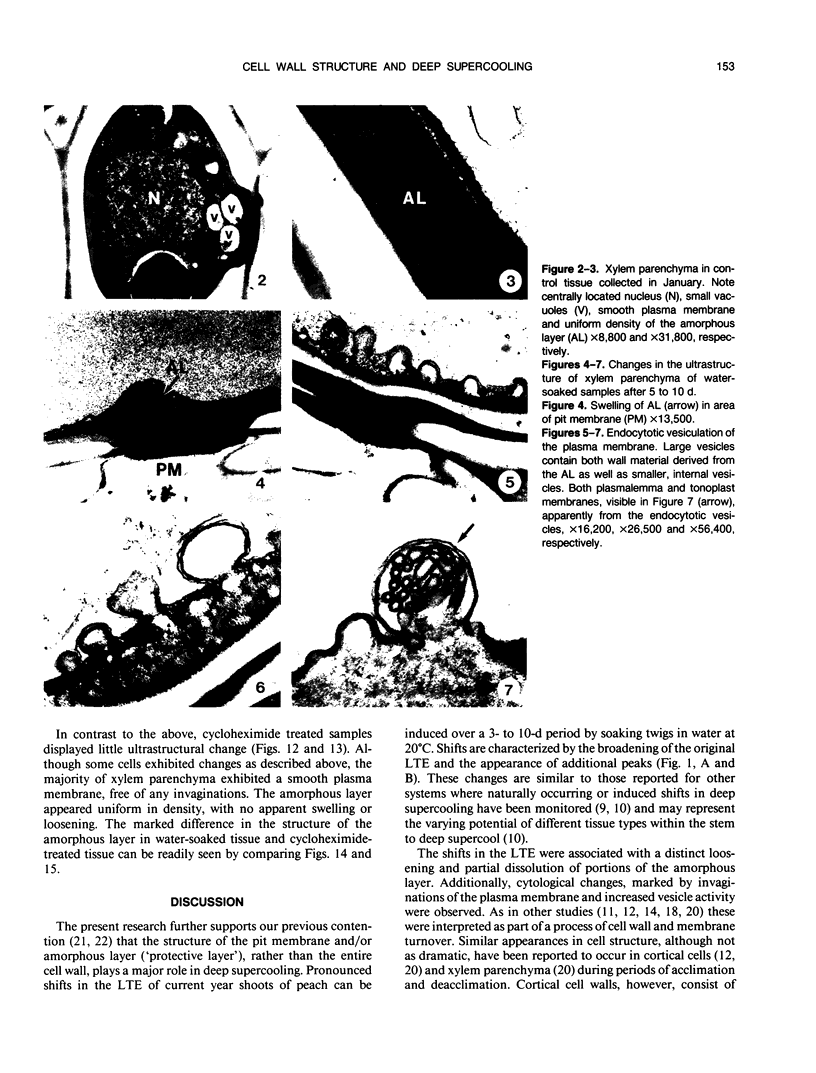
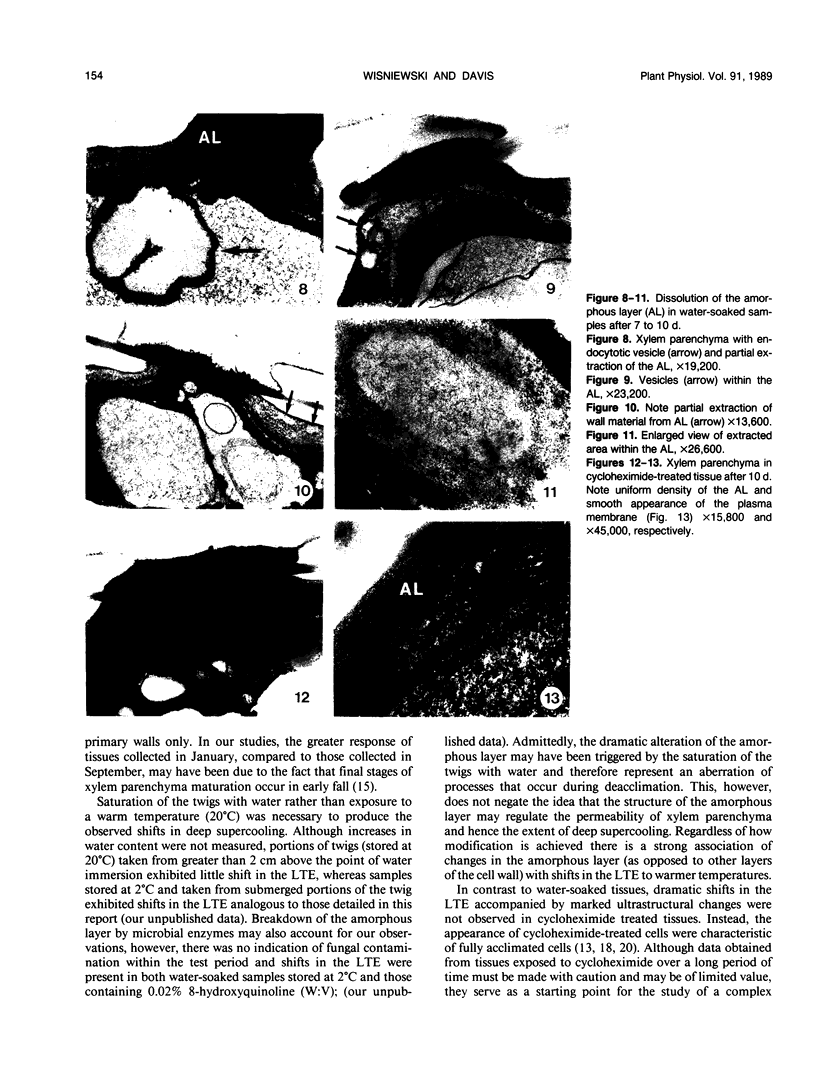
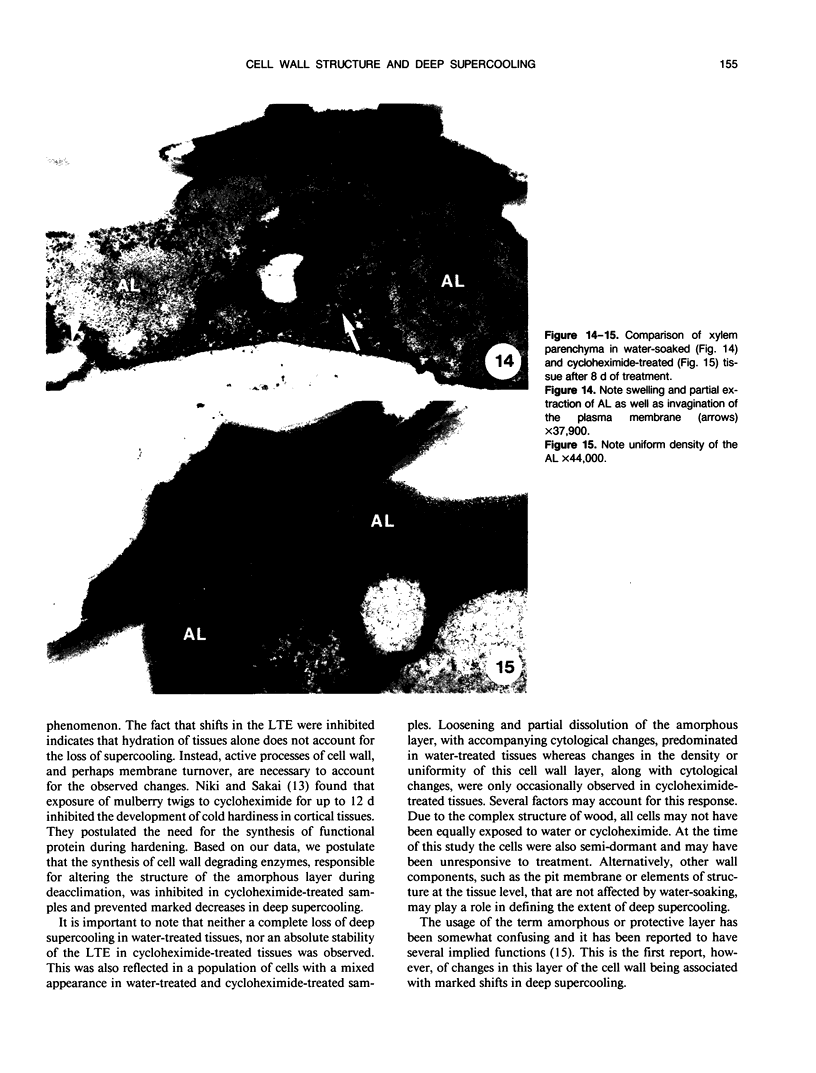
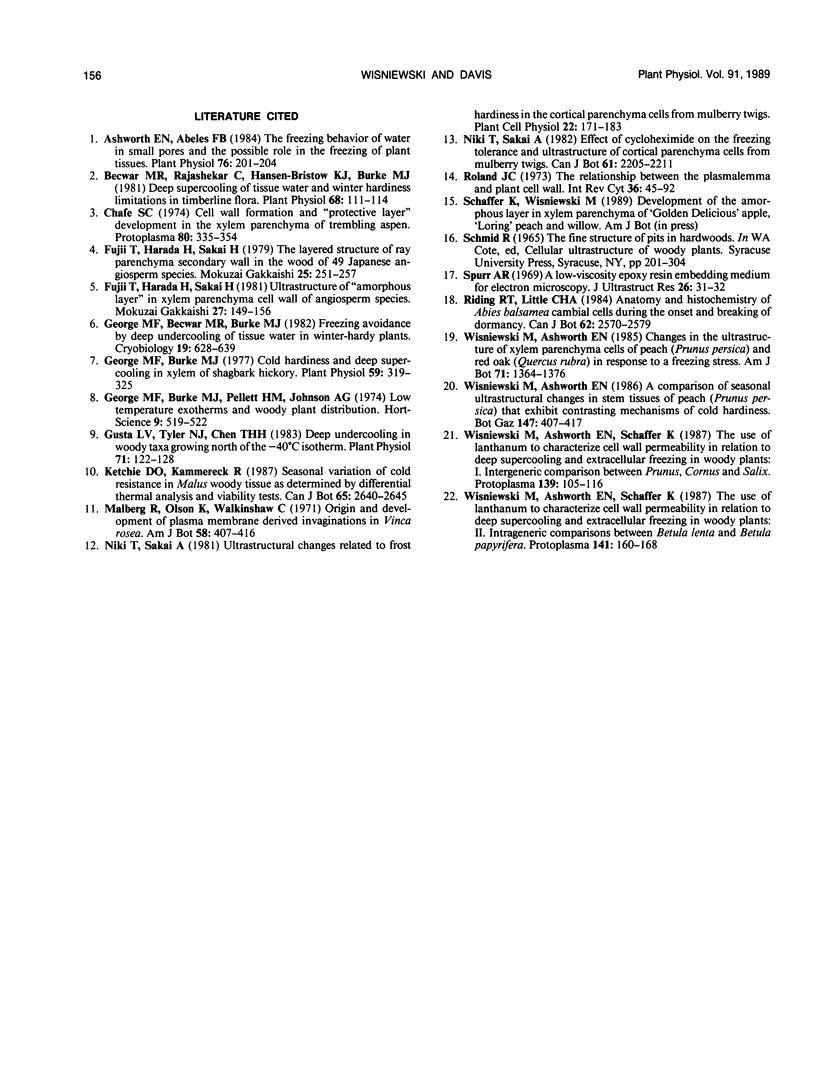
Images in this article
Selected References
These references are in PubMed. This may not be the complete list of references from this article.
- Ashworth E. N., Abeles F. B. Freezing behavior of water in small pores and the possible role in the freezing of plant tissues. Plant Physiol. 1984 Sep;76(1):201–204. doi: 10.1104/pp.76.1.201. [DOI] [PMC free article] [PubMed] [Google Scholar]
- Becwar M. R., Rajashekar C., Bristow K. J., Burke M. J. Deep undercooling of tissue water and winter hardiness limitations in timberline flora. Plant Physiol. 1981 Jul;68(1):111–114. doi: 10.1104/pp.68.1.111. [DOI] [PMC free article] [PubMed] [Google Scholar]
- George M. F., Becwar M. R., Burke M. J. Freezing avoidance by deep undercooling of tissue water in winter-hardy plants. Cryobiology. 1982 Dec;19(6):628–639. doi: 10.1016/0011-2240(82)90192-4. [DOI] [PubMed] [Google Scholar]
- George M. F., Burke M. J. Cold hardiness and deep supercooling in xylem of shagbark hickory. Plant Physiol. 1977 Feb;59(2):319–325. doi: 10.1104/pp.59.2.319. [DOI] [PMC free article] [PubMed] [Google Scholar]
- Gusta L. V., Tyler N. J., Chen T. H. Deep Undercooling in Woody Taxa Growing North of the -40 degrees C Isotherm. Plant Physiol. 1983 May;72(1):122–128. doi: 10.1104/pp.72.1.122. [DOI] [PMC free article] [PubMed] [Google Scholar]
- Roland J. C. The relationship between the plasmalemma and plant cell wall. Int Rev Cytol. 1973;36:45–92. doi: 10.1016/s0074-7696(08)60215-6. [DOI] [PubMed] [Google Scholar]
- Spurr A. R. A low-viscosity epoxy resin embedding medium for electron microscopy. J Ultrastruct Res. 1969 Jan;26(1):31–43. doi: 10.1016/s0022-5320(69)90033-1. [DOI] [PubMed] [Google Scholar]












